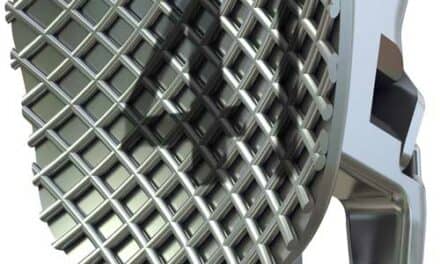As the saying goes, time is money. Thus, TP Orthodontics has developed a product that intends to save orthodontists both. Orthodontic Products recently spoke with Sandra Hoefer, vice president of global marketing for TP Orthodontics Inc, about the company’s pre-coated bracket offerings. She shares with readers her insight on how the technology can improve a practice’s bottom line, as well as where the future lies in bracket technology.
From where did the concept of pre-coated brackets originate? What needs do they satisfy within orthodontics today?
Pre-coated brackets—brackets specially packaged with adhesive already applied—have been on the market for several years. As practices look for efficiencies in time and cost savings, this is an area where manufacturers like TP Orthodontics can contribute by eliminating some of the time and costs associated with storing and bonding brackets. In general, our customers are seeking a good value—not necessarily the lowest-cost product. That is where Readi-Base eXact fits the bill.
The company states that the brackets help orthodontists take their practice to the next level of efficiency. How so?
Since the adhesive is pre-applied to each individual bracket, the prep work needed to organize, mix, and apply the adhesive to brackets by hand is eliminated. Readi-Base eXact has an extended “working time” whereby the brackets can be initially placed and fine-tuned in the desired position without drifting out of position or prematurely curing in office light, yet a full cure and strong bond is achieved during exposure to blue light. Cleanup is easy, since the adhesive viscosity allows for adhesive flash to peel off around the bracket after placement. And, of course, the practice can stock less adhesive in its inventory.
The bracket itself does offer clinicians several benefits over other ceramic brackets on the market, most notably the patented polymer base that creates a protective interface between the enamel and ceramic material. It is also designed for ease of debonding (and in less time), which can be difficult with certain ceramics or other non-metal materials.
How do the InVu Readi-Base eXact brackets compare, from a quality standpoint, to traditional orthodontic brackets?
The InVu brand has been on the market for 10 years and is a “tried and true” polycrystalline ceramic bracket system. The automated application of Readi-Base eXact adhesive is managed under strict controls to ensure that consistent adhesive properties are maintained. Additionally, the adhesive is pre-measured for the size of each bracket in an ideal amount to allow for full coverage and optimal bond strength.
From a quality standpoint, TP Orthodontics is a certified ISO facility, which follows FDA 21 CFR part 820 and ISO 13485:2003 (manufacturing) standards, as well as various international standards.
TP Orthodontics also notes that the brackets provide greater patient satisfaction. In what way is this true?
Besides allowing for less time in the chair for the bond-up, InVu brackets actually blend in with the patient’s natural (or bleached) tooth shade. This is achieved through exclusive Personalized Color-Matching Technology, which refers to the way light is refracted, resulting in a bracket that actually matches the individual tooth color. We also hear from patients that they are surprised to find out InVu brackets don’t show in photos, which is especially important to frequent social media users.
When it comes to debonding time, the InVu brackets don’t require fracturing or grinding as some brackets do. Hearing a bracket break can certainly make for an unpleasant patient experience. That being said, for the most part, the patient identifies their treatment experience with their orthodontist. For us to be able to offer a product to our customers that their patients will be satisfied with is the goal—it’s just one less thing for the orthodontist to worry about.
Going forward, what do you see as the next step in bracket technology within orthodontics?
Well, saving discussion about digital technology for another time—I believe advancements in materials, particularly ceramic technology that will appeal to patients, will continue to evolve. Other new materials or components may emerge from the orthopedic implant industry that could be promising for the small-scale parts required for detailed mechanics often used in orthodontic brackets. These material improvements, as well as enhanced automation and packaging, will allow manufacturers to provide better brackets as tools of the trade for orthodontists. At TP Orthodontics, we are always looking for ways to make the orthodontist’s job easier. OP











